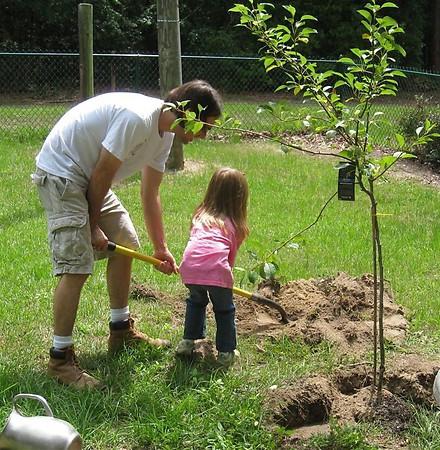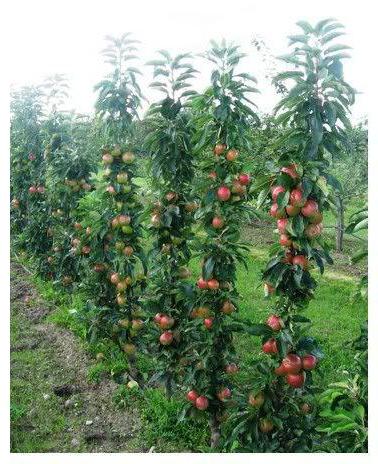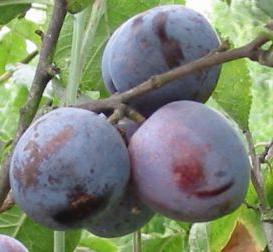Colon-shaped plums: planting and care. Pruning of a column-shaped plum
Even experienced gardeners do not all know aboutColon-shaped plums. Lovingly selecting the varieties for their site, most people are guided by the recommendations of friends and neighbors in the country. And those who heard something about such trees, do not hurry to plant them in their garden: how many conditions they prefer, whether they will bear fruit in your territory, do not they require special labor-intensive care ... It is better to give preference to proven years and generations gardeners grades. To dispel all doubt should contribute to this article.

History of appearance
Trees with such unusual forms, includingand the column-shaped plums, appeared very recently and, it may be said, by chance. In the sixties of the last century, that is, just over half a century ago, a breeder from America noticed on his apple tree an unusual branch growing up, abundantly fruiting and much thicker than its surroundings. Two-year attempts to multiply such a successful process have been crowned with success, and the first column-shaped apple tree, named "Vozhak", was born. The profitability of this form of trees prompted scientists to start breeding other trees, as a result of which first such pears appeared, and afterwards - column-shaped plums. So we can say that we should not give thanks for such successful and convenient trees to breeders and not to genetic engineers, but to the nature that gave such a mutation and the observation of a single person.

Features & Benefits
What is so attractive about these pyramidaltrees, including column-shaped plums? First of all, they are low, on average grow from one and a half to two meters, which greatly facilitates both the care of plants and harvesting. The second plus is an extremely underdeveloped crown. There are practically no branches in it. The crown is formed by fertile kolchatkami with spearmen, which give a very rich harvest: ripe fruit tree is strewn almost closely to each other. The weight of fruits collected from one such plum ranges from six to 12 kilograms. And the tree begins to bear fruit from the second year of life, and up to seven years the yield increases every year. A few more years it stably keeps at the reached level, and after reaching the age of 13-17 years the fruitability ceases, although the tree still lives for a long time. The absence of a lush crown is another attractive feature: the compactness of the trees allows them to be planted very close to each other. And an additional bonus can be considered the quality of their fruits: they do not deteriorate during transportation for significant distances.
The disadvantage of the column-shaped plums is only one: their seedlings are much more expensive than other varieties. On the other hand, investments pay off after the first harvest. And if you appreciate the convenience and ease of care, then in fact from the first day.

Plum Coliform: Varieties
So far there are very few of them. The choice for gardeners is very small - too recently appeared a plum column. The varieties grown on our open spaces have only three items in the list:
- Blue Sweet is a very small tree with a diametercrowns less than a meter, and up to two. The fruits give purple and large, some weigh 70 grams. Has good resistance to colds, average maturity and high yield. As a shortcoming, self-fertility can be mentioned: it requires the addition of pollinating trees.
- Plum Colon Imperial gives fruits with moregentle and refined taste. According to the frost resistance and yield, it is comparable to Blue Sweet, but needs more abundant and frequent waterings. The color of the berries is often violet-pink, but there are also brownish-red. The fruit is larger than the usual plum, but slightly smaller than the Blue Sweet (an average of 55 grams).
- Mirabel. Less common variety; has yellow fruits, ripening late. Of these, the famous plum brandy is prepared and a wonderful jam.
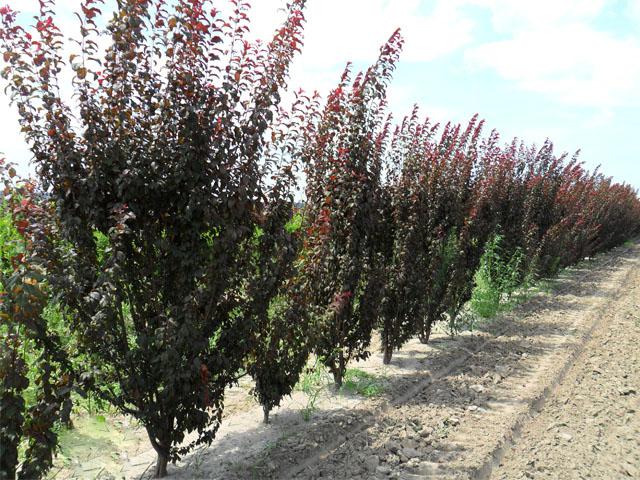
How to plant
Planting a column plum in the first placeis determined by its small size. The trees are planted in rows with a distance of one and a half meters between them and centimeters 30-40 between plums in one row. Before planting the soil is well fertilized, and mainly organic - good fruiting is possible only on rich soils. However, during planting, no additional fertilizing is done: the root system of the trees is relatively weak, and the seedlings can not cope with excess food. The pit is excavated in such a size that all the roots can fit freely in it. For planting it is better to buy annual trees - they get accustomed quickly and confidently. More mature seedlings have an already developed root system, accustomed to certain soils, and after planting they get sick for a long time, and sometimes they die. After planting, the trees are well spilled with water with rooting stimulators of root formation. It is also recommended to immediately treat them from garden pests and diseases: until the seedlings are rooted, they are very susceptible to both, and to others.
When to plant
In the southern regions, trees can be planted inearly autumn. If you buy column-shaped plums for the Moscow region or even more northern areas, set a planting time for the spring, when the threat of recurrent frost will completely disappear, so that young trees will have time to get stronger before winter.
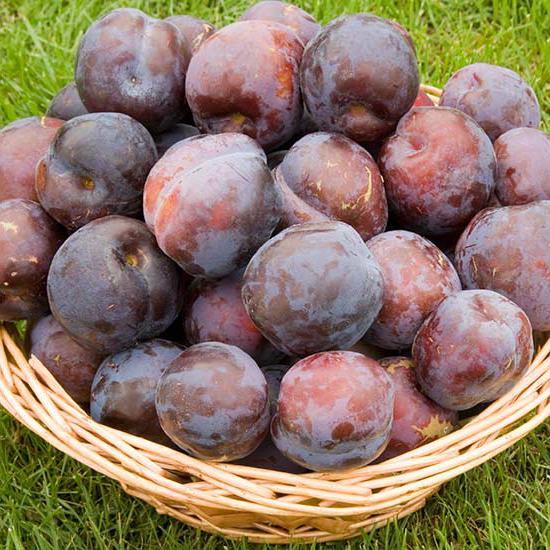
Feeding rules
If you decide to have a column on the sitePlums, planting and care for them will not be too different from similar procedures for conventional drains. You need to feed trees three times a year. The first time it is done after the full bloom of the kidneys. Every subsequent time, fertilizers are introduced in two weeks. To fertilize 50 grams of urea (two matchboxes) are dissolved in a 10-liter bucket of water. Under each tree pours out two liters.

Trim Plums
Due to the peculiarities of their structure, thesetrees in the regular pruning to form the crown do not need. Sometimes you have to remove broken or otherwise damaged branches, but such cases can be attributed to force majeure. Pruning a column plum is performed in two cases:
- Damage of the apical kidney on the main shoot. It is cut off, and the lateral is taken out as the central one. Sometimes gardeners leave 2-3 shoots to find out what will be more successful to develop. Unnecessary after are used for the scion.
- Aesthetic intentions: some gardeners prefer bushy shapes. Then pruning in the first couple of years will be regular. However, this formation can significantly reduce the fruitfulness of the tree.

Care
Colon-shaped plums - rather unpretentioustrees. In watering, they need the same regime as the usual "brethren". Treatment from pests is also not much different from other trees in the garden. Attention should be paid to three points:
- Young column-shaped plums, planted in autumn,spring often blossom and can even tie fruit. However, the undeveloped root system and young age are not yet suitable for crop formation - the tree is heavily depleted, becomes vulnerable to disease, and in the following years it will be in vain to expect from it the prolificness. Therefore, all the ovaries in the first two years after the migration to the site with such drains must be removed.
- The crop weight for the drain-columns is still quite large. Therefore, trees, even adults, need support during fruiting. Especially it concerns those in which the fruits are formed mainly from one side (for example, planted along the fence or the wall of the house). Unbonded branches can break, and the whole "column" can be deformed and begin to develop one-sidedly.
- Despite frost resistance, before winterColon-shaped plums require additional care: the land between them is mulched (usually sawdust of coniferous trees), and the trunks are wrapped up in rodents. Especially strong in this need neofrepshie seedlings. If they do not provide such a shelter, they may not live until spring.

